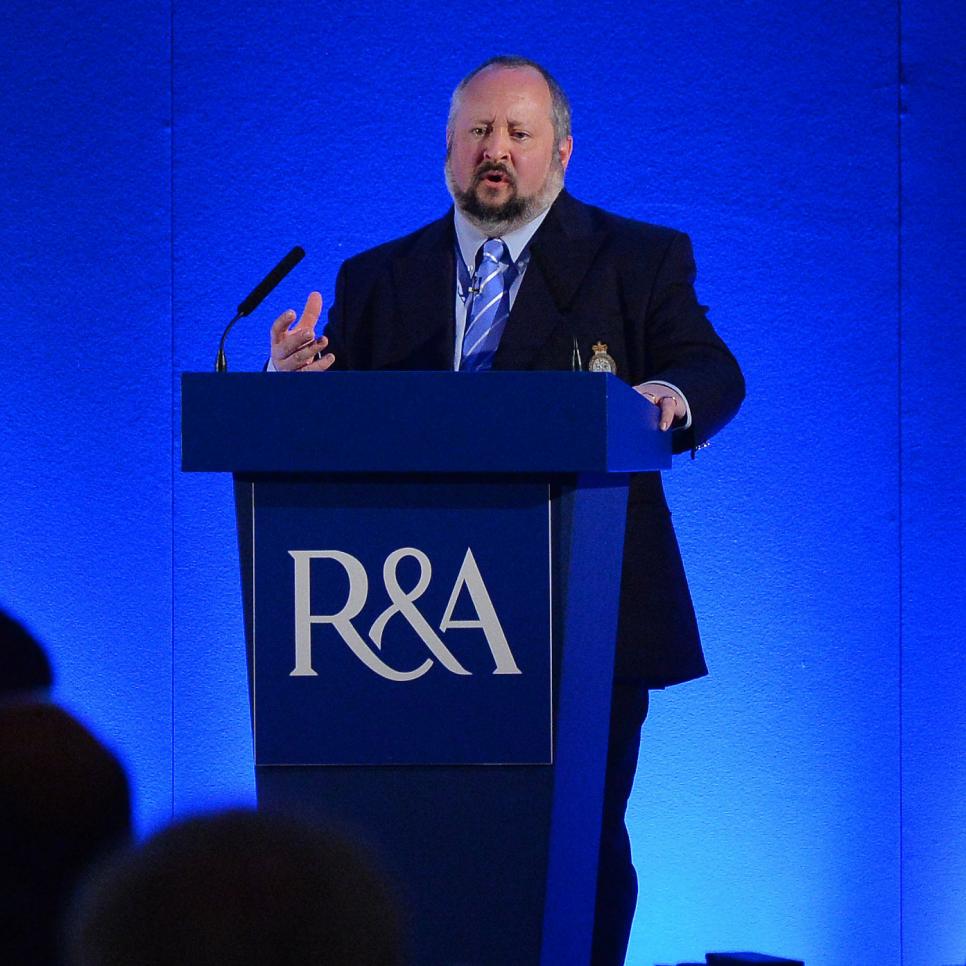Could a driver rollback be next? The R&A’s chief of technology says it’s ‘a topic of interest’ – Australian Golf Digest

- by Admin
- July 12, 2024

Steve Otto, the R&A’s chief technology officer and one of the lead architects of the 100-year study of driving distance, says the plan to roll back distance through a shorter golf ball, formally announced late in 2023, has been a deliberate, scientifically rigorous process. In turn, any potential decision to roll back the driver would be just as robust and one that’s still on the ruling body’s mind. (The USGA is the governing body for the United States and Mexico, and the R&A governs the rest of the world.)
Otto addressed attendees at the 2024 World Scientific Congress of Golf at England’s Loughborough University on July 11 in a talk that detailed the scientific efforts behind the R&A’s research across all phases of the game, not just the distance issue. He stressed that it is unequivocal that distance has increased, and the driver remains “a topic of interest.”
RELATED: The golf-ball rollback explained for regular golfers.
Otto, however, believes any change to the driver’s size, forgiveness or degree of springlike effect would likely be implemented only at the professional level. “We had clubs made that were smaller with lower moment of inertia [less forgiving],” he says. “That was not pretty, but for the elite golfer that is still very much on the table.”
Otto added that any change would depend on what happens after elite players have been playing with the shorter ball for a period. “Before the [golf-ball rollback was announced this past December], we sat down with several tour players, and a lot of them said, ‘You’re addressing the wrong thing; you should be addressing the club.’ Of course, I think if we’d gone with the club only, we’d have almost as much criticism saying, ‘Why aren’t you doing the ball?’”
Otto believes it’s important to get the ball’s 2028-’30 timeframe implementation correct first: “You can’t expect the industry to do both of these things at once,” he says.
The club, he says, would be harder to regulate on multiple levels. “We’ve upped people’s understanding of what we’re doing. They’re watching more carefully, and there’s far more data questions coming at us. Any decision we make on a club will need to be held to a higher level of data scrutiny.”
This means any kind of elite-player rule targeting the driver would need to get at how the game is being played. “We have to look at the secondary elements of the data to see if we see a change in the behavior of players,” Otto says. “That might lead us to say these clubs are too forgiving. We need to give them ones that are more penal so if they can hit it in the middle at incredible speed, that’s a real skill. It’s looking at the dynamics and balance of skills in the game a little more.”
Otto remains resolute on the need to recalibrate distance based on elite male driving distance. The change to what will be a conforming (and shorter) ball will take place starting in 2028 for elite competition and will apply to all golfers starting in 2030. New balls submitted for conformance starting in 2028 must pass the overall distance standard at the new, higher speed. He says the general trendline of distance increase during the past century makes clear the case for change.
RELATED: Will those golf balls you’re hoarding be good when the rollback goes into effect?
“Most people, if you put them into a cold dark room, would admit that overall distance has increased, but we’re still arguing about bits of data, and we’re trying to engage with people on those discussions to understand their points, but, really, the decision has been made.”
Steve Otto, R&A chief of technology, speaks at a conference in 2017.
Mark Runnacles/R&A
Part of what comes next is the challenge of implementing the rollback of golf balls. Under the new test for conformance, the test swing speed has been raised five miles per hour to 125 miles per hour. According to data from the USGA and R&A, that would lead to a 15-yard reduction in driving distance for the fastest male professionals.
Otto stressed that the R&A’s Grant Moir, executive director of governance, and Mark Grattan, director of equipment standards, have been in discussions with ball manufacturers about the rollback. He said the early research with prototype balls from manufacturers and the number of golf-ball patents made it clear to him that the four-year transition period is sufficient.
“We’ve got plenty of time to talk to them and work out this problem,” he says. “It’s not us sitting there in our ivory towers and saying, ‘You must do this.’ Grant Moir and Mark Grattan are doing a lot of interaction with manufacturers around the world.”
Although several manufacturers have questioned the need for any distance rollback, the PGA of America and the PGA Tour have yet to embrace publicly the shorter ball that is scheduled to be in play in 2028. As Otto says, “It’s not going to work if we sit in St. Andrews and cross our arms.”
That transition window brings with it other challenges given that recreational golfers will still be able to play and likely demand the faster balls for their use. (To be clear, the ruling bodies have produced research that the impact on the driving distance for most recreational golfers will be relatively minimal, typically around three yards, or well less than the average variance in any golfer’s distance variability.) Still, Otto believes it will not lead to a fragmented game once the ball rollback is implemented. In the end, he doesn’t believe there will be a substantial hoarding or market for balls that don’t conform to the new standard.
This article was originally published on golfdigest.com
The Latest News
-
November 15, 2024Nick Kyrgios set to make long-awaited return to tennis as comeback date revealed
-
November 15, 2024List wins elusive DP World Tour card, Barron loses his
-
November 15, 2024India great warns ‘the king is back in his territory’ as struggling Virat Kohli returns for fifth tour
-
November 15, 2024‘Adaptable’ Murphy spins out WA to put Vics in control | cricket.com.au
-
November 15, 2024Nick Kyrgios: Australian tennis star confirms return to ATP Tour at Brisbane International in December





